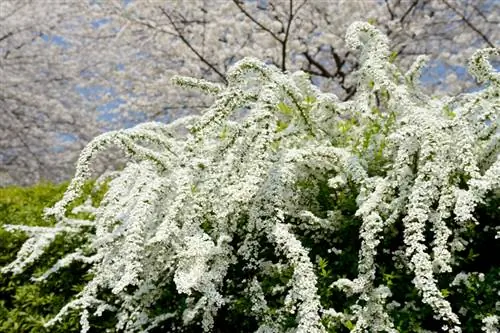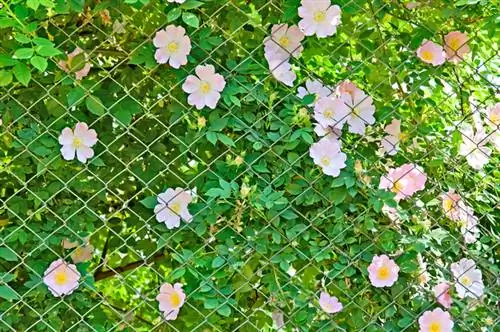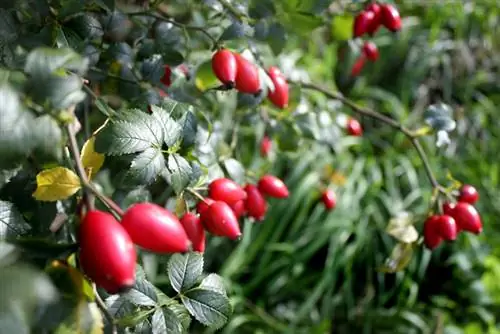- Author admin [email protected].
- Public 2023-12-25 17:45.
- Last modified 2025-01-23 11:20.
A hedge of wild roses has a simple and moving effect: wildly romantic and reminiscent of the fairy tale of Sleeping Beauty. Such a hedge has many advantages. But only if you plant and care for them correctly

What are the benefits of a wild rose hedge?
A wild rose hedge is easy to care for, frost hardy, tolerates pruning and offers privacy and wind protection. It delights with fragrant flowers, decorative rose hips and is a popular pasture for bees. It also serves as a nesting and hiding place for birds and small animals.
Species that are particularly suitable for hedges
Not all types of wild roses are equally suitable for hedge design. The pike rose, potato rose, elliptical rose, Scottish fence rose/wine rose and the multi-flowered rose appear particularly suitable. If you want to create a high privacy hedge, you should choose the tufted rose, the dog rose or the dune rose.
Benefits of a wild rose hedge
A wild rose hedge has numerous advantages:
1. fragrant flowers in early summer
2. Decorative rose hips from midsummer to winter
3. edible, vitamin-rich, medicinal fruits
4. popular bee pasture
5. not in need of care
6. Very frost hardy and not very susceptible to disease
7. extremely easy to cut
8. forms runners (can also be disadvantageous)
9. offers nesting and hiding places for birds and small animals10. offers privacy and wind protection
Planting: location and soil
The wild roses are planted for the hedge in autumn or spring. The following applies: the sunnier the location, the better the hedge will thrive. The shoots will grow faster and stronger. If necessary, a spot in partial shade can also be chosen. It is also important that the location is airy.
The soil at the location should be deep and can be both nutrient-rich and nutrient-poor. Some species, such as the dune rose, cope well with dry soils.
The correct planting distance
For a dense hedge, which is intended to serve as a property boundary, for example, you should plant 1 to 2 plants per linear meter. For a free-growing hedge, a generous distance of 2 to 3 meters should be maintained. The reason: Wild roses develop an arching, overhanging habit and tend to grow up to 2 meters wide.
Planting different species next to each other
The wild rose hedge looks particularly appealing if it consists of different types of wild roses. There are red, white, yellow, soft pink and magenta blooming wild roses. Plant different types next to each other and you will witness long-lasting blooms, as wild rose types bloom at different times (e.g. the golden rose quite early).
Care for the hedge properly
A wild rose hedge like this doesn't need much care. The wild roses are extremely undemanding. They do not need fertilizer and do not need to be watered. There is also no need for protection in winter as they are very frost hardy.
You should only thin out your wild rose hedge regularly. In doing so, you completely remove all old and dead shoots. This makes sense every few years. Pruning is not necessary, but can be tolerated. Remember: the more the wild rose hedge is cut, the more sparsely it will bloom (flowers on the two-year-old shoots).
Tip
The potato rose is particularly popular as a hedge because it grows extremely quickly and is densely covered with thorns.






